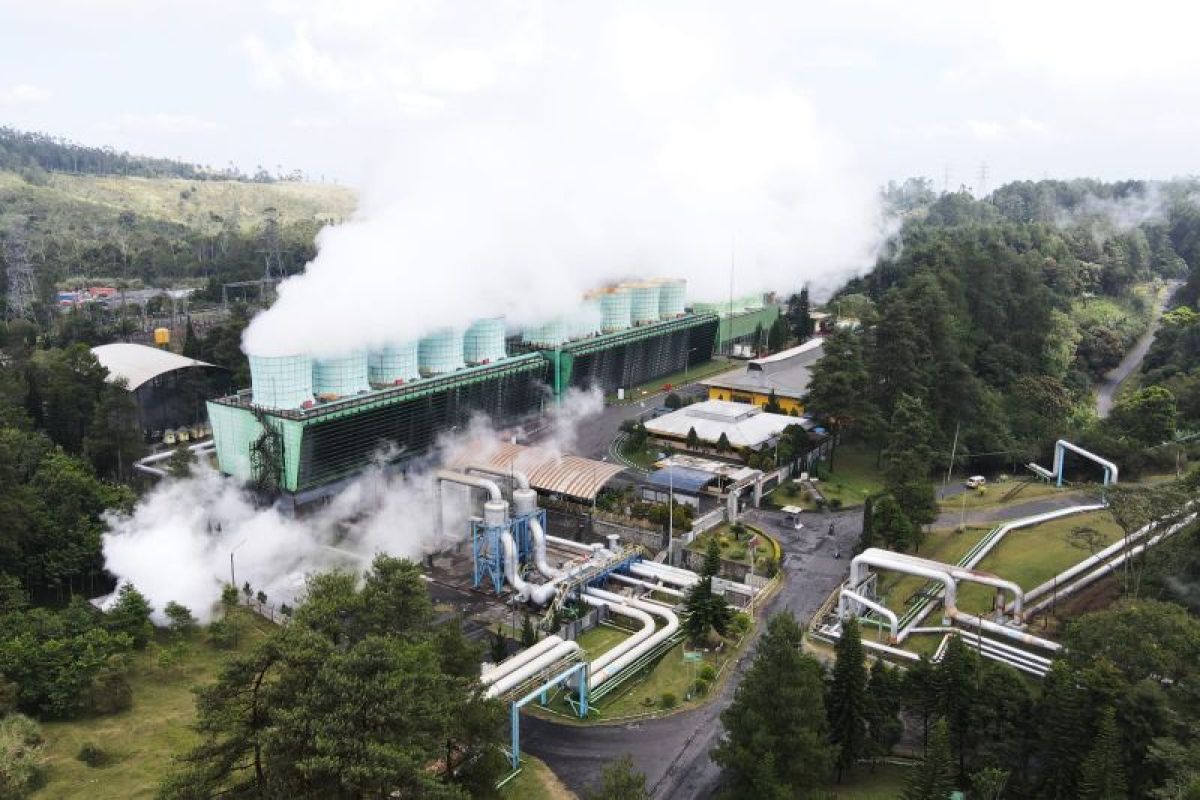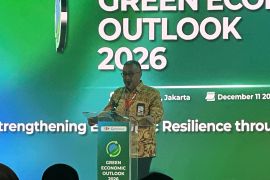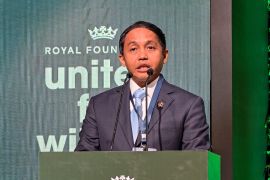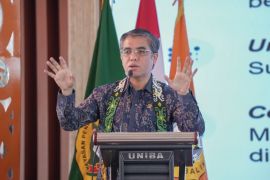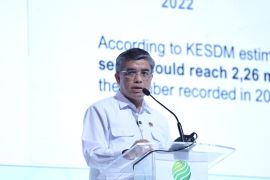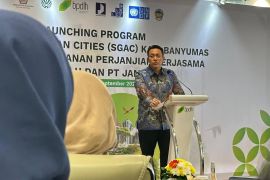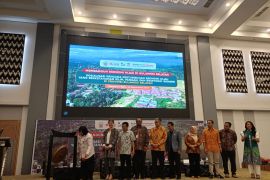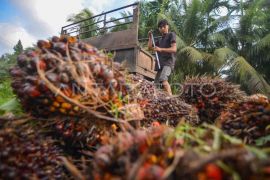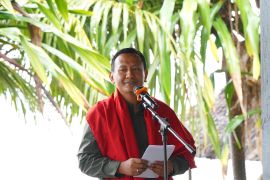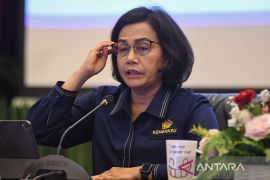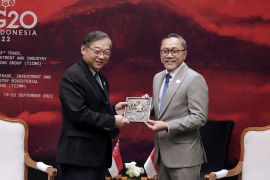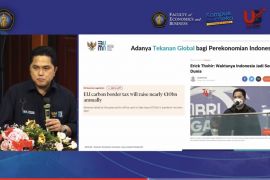Indonesia has increased its Nationally Determined Contribution (NDC) emission reduction commitment from 29 percent to 31.89 percent through its own efforts, and from 41 percent to 43.20 percent with international assistance by 2030.Jakarta (ANTARA) - In 2022, the National Development Planning Ministry (Bappenas) unveiled the Indonesian GEI (Green Economy Index), themed "Towards Implementation and Beyond: Measuring the Progress of Low Carbon and Green Economy," during the Third G20 DWG Meeting side event in Bali.
The ministry launched the index in partnership with the United Kingdom's Foreign Commonwealth and Development Office, Germany's Federal Ministry for Economic Affairs and Climate Action, WRI Indonesia, international development agency GIZ, Low Carbon Development Initiative (LCDI), Global Green Growth Institute (GGGI), and the United Nations Partnership for Action on Green Economy (PAGE).
The 15 indicators that make up the Indonesian GEI and indicate green economic development are divided into three pillars: environmental, social, and economic. Emission intensity, energy intensity, and gross national income (GNI) per capita are the six measures that make up the economic pillar.
The four variables that make up the social pillar are life expectancy, unemployment, poverty, and average length of schooling. Meanwhile, five indicators make up the environmental pillar: controlled waste, renewable energy, reduced emissions, degraded peatlands, and land cover.
Indonesia's national development plans, including the Medium-Term National Development Plan (RPJMN) 2025–2029 and the Long-Term National Development Plan (RPJPN) 2025–2045, have incorporated into the Indonesian GEI.
Through the implementation of the GEI, the nation's annual economic growth is predicted to reach 6.1–6.5 percent by 2050.
Furthermore, by 2045, emission intensity is expected to drop by as much as 68 percent, and by 2030, 1.8 million new green jobs are likely to be created.
The green economy is one of six economic transformation strategies formulated by the Bappenas to achieve Indonesia's 2045 vision.
The strategy is considered a game changer for Indonesia in the post-Covid-19 economic recovery period and in its steps toward achieving sustainable development
The implementation of the green economy is not an obstacle, but a new opportunity for future economic growth, according to deputy for economy at the Ministry of National Development Planning, Amalia Adiningrat Widyasanti.
Once people implement green economy massively and thoroughly, it will definitely create a new opportunity for economic activities in Indonesia, contributing to economic growth acceleration, she explained.
Widyasanti made the statement at the launch of the Policy Brief of Greenpeace Indonesia and CELIOS: The Fate of the Green Economy Transition in the Political Year.
She informed that in the national long-term plan for 2025–2045, the transition to a green economy involves several main focuses.
The first focus is transitioning toward clean and renewable energy, with the renewable energy mix targeted to reach around 60 percent by 2045.
Second, implementing environmentally friendly transportation, or green transportation. Third, applying a circular economy approach in industries and people's daily lives.
The implementation of the green economy will be the main focus of the Golden Indonesia vision, starting from 2025 to 2045, and will be an integral part of Indonesia's economic transformation efforts, she said.
Regarding the challenges, she emphasized the need to make the necessary preparations, including increasing human resources, adopting clean technology, and expanding the supporting ecosystem through policies and regulations that support the green economy in various sectors.
Implementing a green economy requires major changes that must be supported by a good ecosystem and joint efforts to achieve sustainable economic growth in the next 20 years, she said.
Several policies, such as increasing energy efficiency, a just energy transition, developing smart grids, and implementing a circular economy, are considered the basis for those changes.
Widyasanti also emphasized the importance of providing fiscal and non-fiscal incentives for environmentally friendly products.
She added that the green economy push is not only limited to the energy transition, but also extends to strengthening other pillars to ensure sustainable economic growth in the next two decades.
Therefore, Indonesia is strengthening its commitment to embrace the green economy as a foundation for future economic growth, she continued.
Meanwhile, Finance Minister Sri Mulyani Indrawati said that state expenditures in the 2024 State Budget (APBN) will be used to support the acceleration of the green economy.
State spending in 2024 will also be directed toward completing priority infrastructure to accelerate the green economic transformation and support bureaucratic and state apparatus reform, Indrawati informed.
She pointed out that the size of the state expenditure allocation in the 2024 State Budget is Rp3,325.1 trillion, or 8.6 percent higher compared to the 2023 State Budget.
The APBN will make utmost efforts to fulfill all national development priority programs, starting from protecting the people, including vulnerable groups, restoring the economy, encouraging transformation, and developing all corners of the region, to improving defense and security.
These efforts will be carried out while maintaining the APBN as an instrument whose health, sustainability, and credibility must be maintained.
In this way, the APBN fiscal policy can continue to be effective in maintaining the economy and protecting the Indonesian people, she affirmed.
The 2024 State Budget was prepared assuming optimistic macro indicators, but with due attention to the rapidly changing dynamics.
The basic macro assumptions for the 2024 APBN comprise economic growth of 5.2 percent, controlled inflation of 2.8 percent, rupiah exchange rate of Rp15 thousand per US dollar, interest rate on 10-year Government Securities (SBN) of 6.7 percent, Indonesian Crude Price (ICP) of 82 US dollars per barrel, as well as oil lifting of 635 thousand barrels per day and gas lifting of 1.033 million barrels of oil equivalent per day.
Assumptions for economic indicators in 2024 will, of course, still be influenced by global economic developments. Therefore, to maintain the economy, it is vital to also maintain the health of the APBN, she said.
In managing the State Budget, the minister emphasized the quality of spending, synergy, and harmonization of the State Budget and Regional Budgets (APBD), as well as anticipating uncertainty that will continue to arise through budget prioritization, thereby necessitating automatic adjustment.
In addition, Coordinating Minister for Economic Affairs, Airlangga Hartarto, said that the State Budget will also prioritize projects that seek to overcome climate change and encourage climate-friendly activities.
To ensure this, the government is implementing a Climate Budget Tagging mechanism at the national and regional levels to track climate change budget allocations as well as present data on activities and results.
Further, Indonesia has increased its Nationally Determined Contribution (NDC) emission reduction commitment from 29 percent to 31.89 percent through its own efforts, and from 41 percent to 43.20 percent with international assistance by 2030.
The Enhanced NDC is aligned with the Long-Term Low Carbon and Climate Resilience Strategy 2050 and the vision to achieve net zero emissions by 2060.
According to the UN Environment Program, the notion of a green economy does not replace sustainable development, but creates a new focus on the economy, investment, capital and infrastructure, employment and skills, and positive social and environmental outcomes.
Thus, the green economy provides a macroeconomic approach to sustainable economic growth with a central focus on investments, employment, and skills.
Related news: Green economy new opportunity for economic growth: Ministry
Related news: State spending supports acceleration of green economy transformation
Editor: Arie Novarina
Copyright © ANTARA 2024
